Background
- Founded in 1985 when Martin Sorrell acquired a stake in the company.
- In 1986 Sorrell became the first CEO (Sorrell 2008).
- Acquired J. Walter Thompson group in 1987.
- Listed in NASDAQ stock exchange in 1988.
- Acquired Young and Rubicam group including Y&R advertising, Burson Marsteller, Landor, Wunderman, Cohn and Wolf and Suddler& Hennessy in 2000.
Wire and Plastic products was founded in the year 1985 when Martin Sorrell acquired a stake in the company. Before 1985 WPP engaged itself in the manufacturing of wire shopping baskets. In 1986 Sorrell became the chief executive of the group; he managed to acquire marketing services companies based in the US and the UK. In 1987 he managed to acquire the J.Walter Thompson group. In 1988 it was listed in the NASDAQ stock exchange in New York.
In the 2000 WPP acquired Young and Rubicam group including Y&R advertising, Burson Marsteller, Landor, Wunderman, Cohn and Wolf and Suddler& Hennessy. Due to the acquisitions made by WPP it became the world’s top advertising company overtaking Omnicom group and Interpublic. In 2007, WPP digital was created to harness digital media opportunities and further digital partnerships with 24/7 Real Media and others. In 2008 WPP acquired a market research firm Taylor Nelson Sofres. In 2009 WPP had to reduce its’ employees due to the economic recession. WPP is a multinational advertising company based in London; it is the world’s largest communication group employing 170000 people working in 300 offices in over 100 countries.
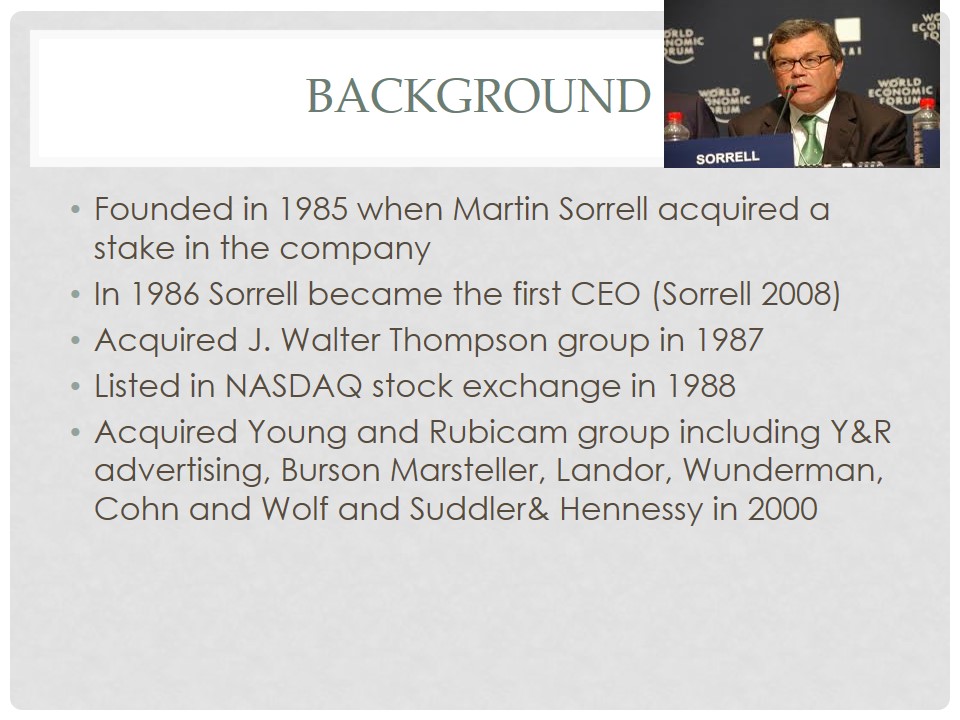
Marketing Environment
- Advertising industry has performed below expectations in UK.
- Technological developments have hugely impacted in this industry.
- Most advertising are done online.
- Pressure from competitors.
- Operates in over 100 countries.
Considering the economic environment, due to the recession the advertising industry has performed relatively below expectation than other industries in the UK. When there is economic growth the advertising industry flourishes but when there is a lapse in the performance of the economy this tends to affect the advertising industry negatively. Secondly considering the technological environment, various developments have occurred. The personal computer and the internet have really made a big impact to the advertising industry. This is because most of the advertising is now conducted online. In addition digitalization has also been implemented in advertising. The third aspect in the market environment is the competitive pressure, despite WPP being a leading advertising company it has faced enormous competition globally form other companies like Omnicom group and Interpublic group. In addition considering the regulatory environment WPP has to comply with the regulations set by the Advertising Standards Authority whose main role is to regulate the content being advertised in the UK. Being a multinational company WPP operates in over 100 countries the cultural backgrounds and demographic environments varies in these countries. It is essential for WPP to be flexible and adapt to these changes.
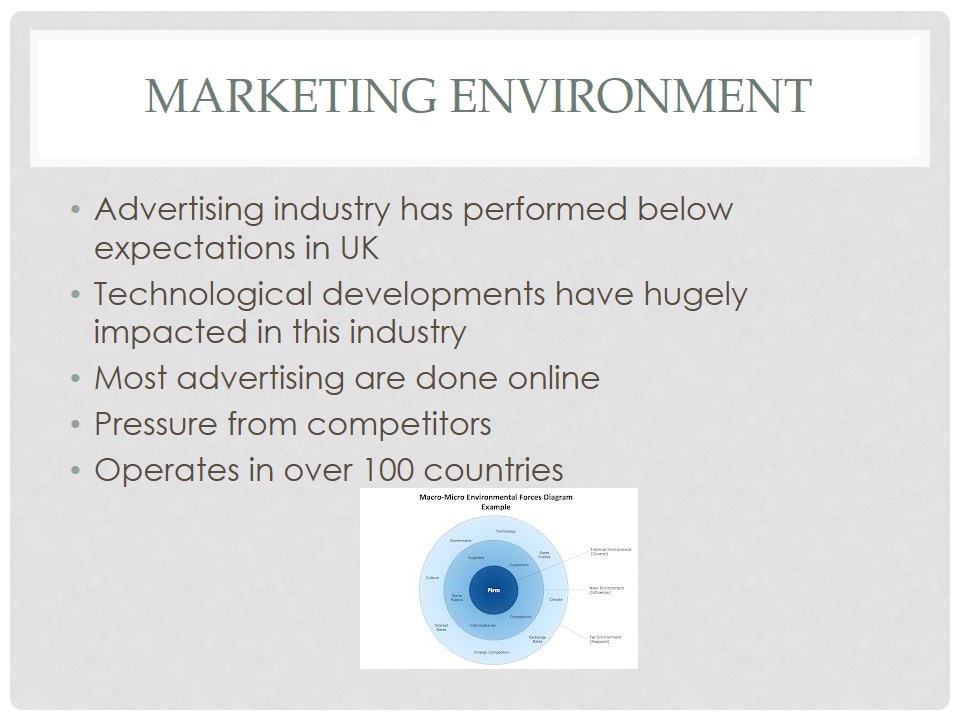
Competition
- Interpublic Group.
- Omnicom Group.
WPP faces competition from very many advertising agencies both in the UK and internationally. This research shall analyze two competitors of WPP; these are Interpublic Group and Omnicom Group. Starting with The Interpublic group, it is a global company which deals with advertising. Interpublic is composed of four major networks, it has a very high growth rate between 2009 and 2010 it attained a growth rate of o.7%.In 2012 it made a revenue of almost seven billion. It is traded as NYSE:IPG. Inter public’s market price is 16.95. Considering Omnicom group it is also a global company, it is traded as NYSE:OMC. In 2012 it attained revenue figures of over 14 billion dollars. The growth rate of Omnicom group is also high, between the years 2010 and 2011it attained a growth rate of almost 0.6%.
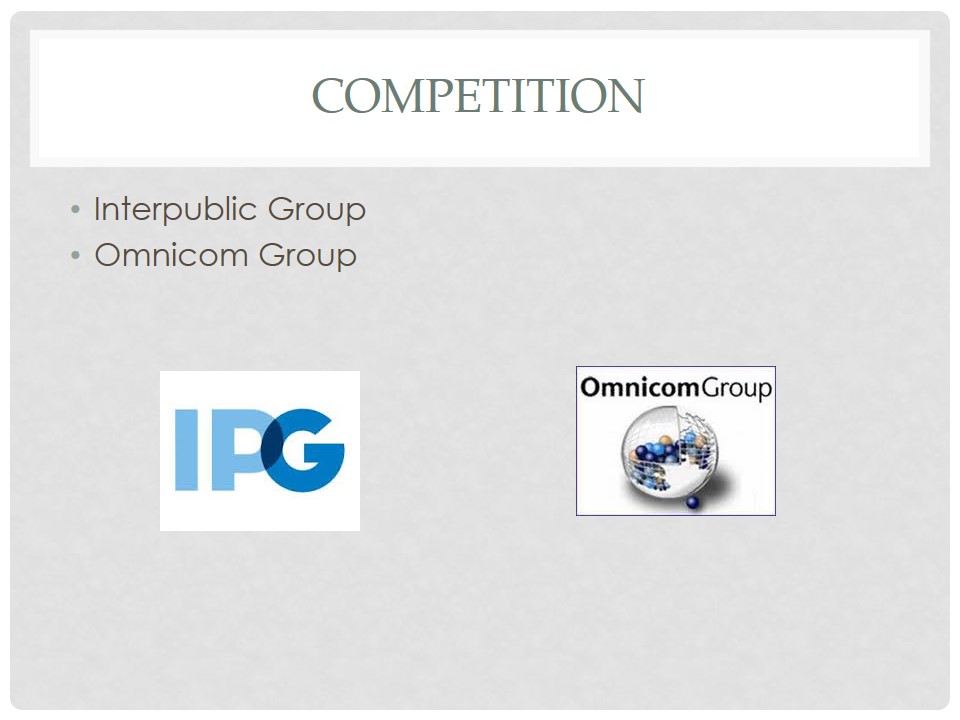
Marketing Objectives
- To faster growing markets to be over one third of total group this ranges between 35-40%.
- New media to be over one third of total group i.e. 35-40%
- Quantitative disciplines including consumer insights to be over one half of total group with focus on digital and consumer insight, data analytics and new technology.
- To invest in the expansion of the network and their Kantar Media and Group use M specialist services.
- To use proprietary technology linked with industry partnerships to improve client campaign effectiveness.
- To create a proprietary platform so as to enable the management of proprietary data and interface with the changing industry landscape.
- To ensure improvement in operating margins.
- Usage of free cash flow to enhance share owner value and ensure improvements on return of capital employed (WPP 2013).
- Invest in new products to offer specialist services in retail marketing, DSPs and in the measurement of effectiveness of the web.
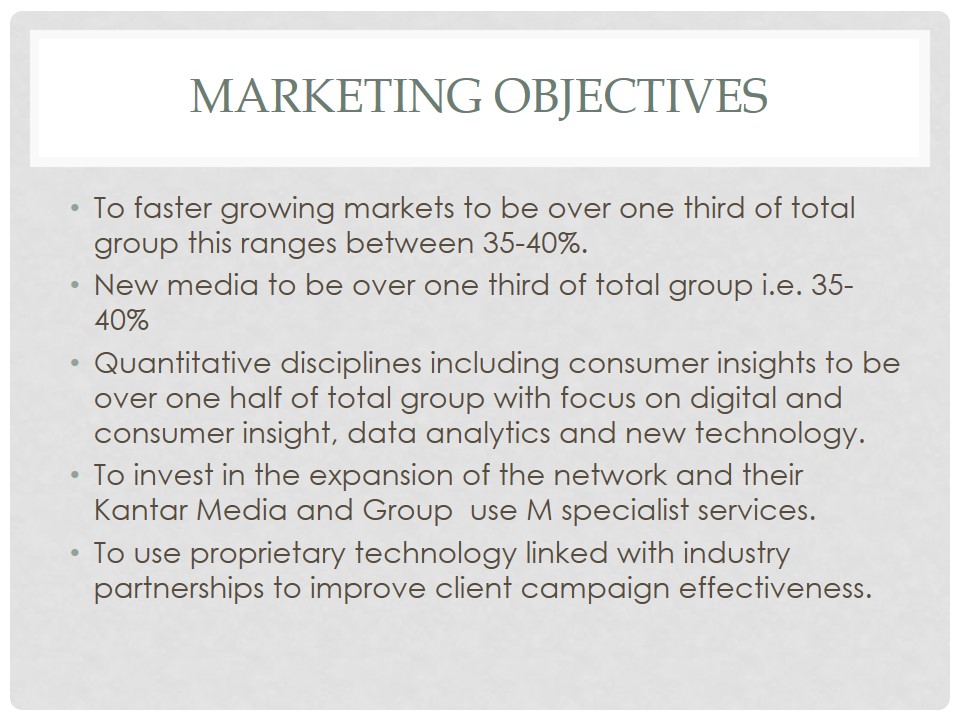
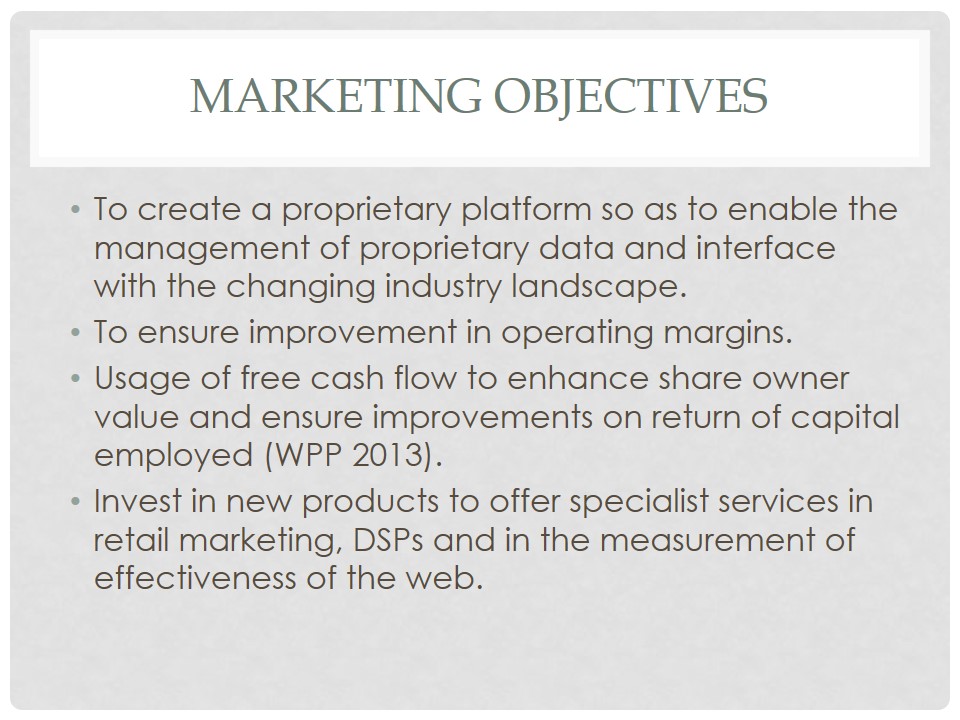
Short Term Marketing Strategy
To grow revenues and gross margin faster than the industry average and deliver margin objective by managing absolute levels of cost.
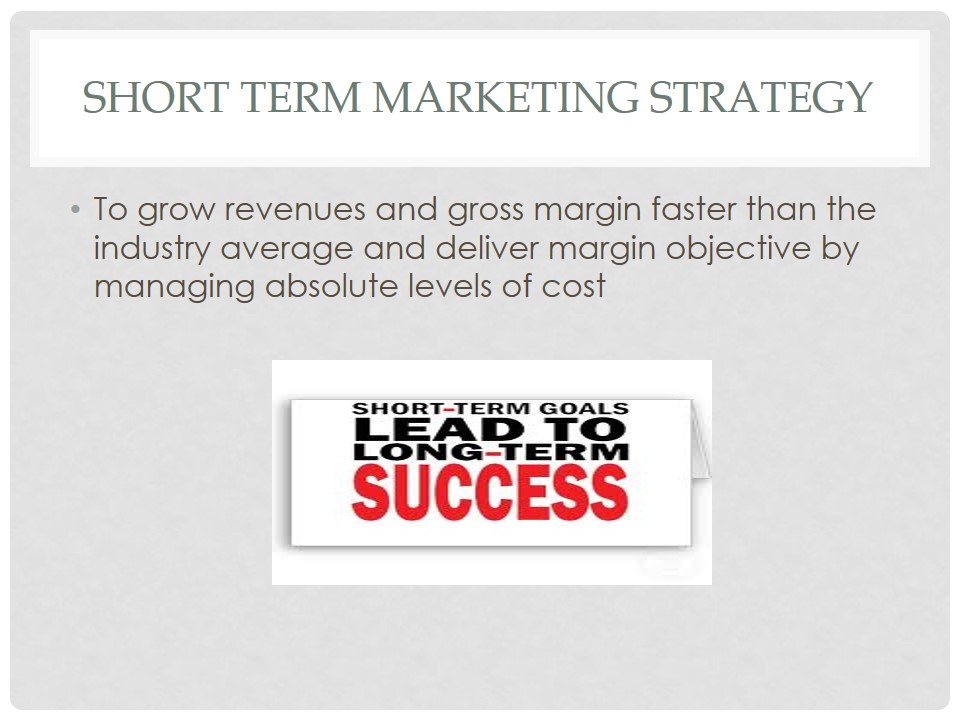
Long Term Marketing Strategies
- Engagement in low cost producer activities in order to maximize on the attained profits.
- Invest in digital in all their businesses through training, recruitment and acquisitions.
- Develop new service beyond traditional advertising e.g. web development, DSPs, mobile, social, e-commerce and e-shopper.
- Establish a proprietary technology platform based on WPP’s licensed technologies (Stuart 2006).
- Invest in ability to control and use data for WPP and client benefit.
- Engaging in the appropriate segmentation activities, ensuring the various departments meet their targets at the right time.
- Build strong partnerships with leaders such as Microsoft, Google, Facebook, Apple and Twitter.

Advertising Objectives
- To be able to demonstrate their advertising services to their prospective clients worldwide.
- Enhancing the image WPP has, so as to be able to increase the client base and reinforce the brand loyalty.
- Relation of a positive impression of WPP to the public in general, so as to enhance the reputation of the company in all the countries of operation.
- To ensure increase in the weekday traffic by at least 10% so as to be able to increase the clientele of WPP.
- Conduct advertising promotions in the countries of operation.
- Utilization of the internet in advertising, including participating in blogs that are about WPP.
- Usage of the media at the lowest cost possible so as to be able to reach as many target clients as possible.
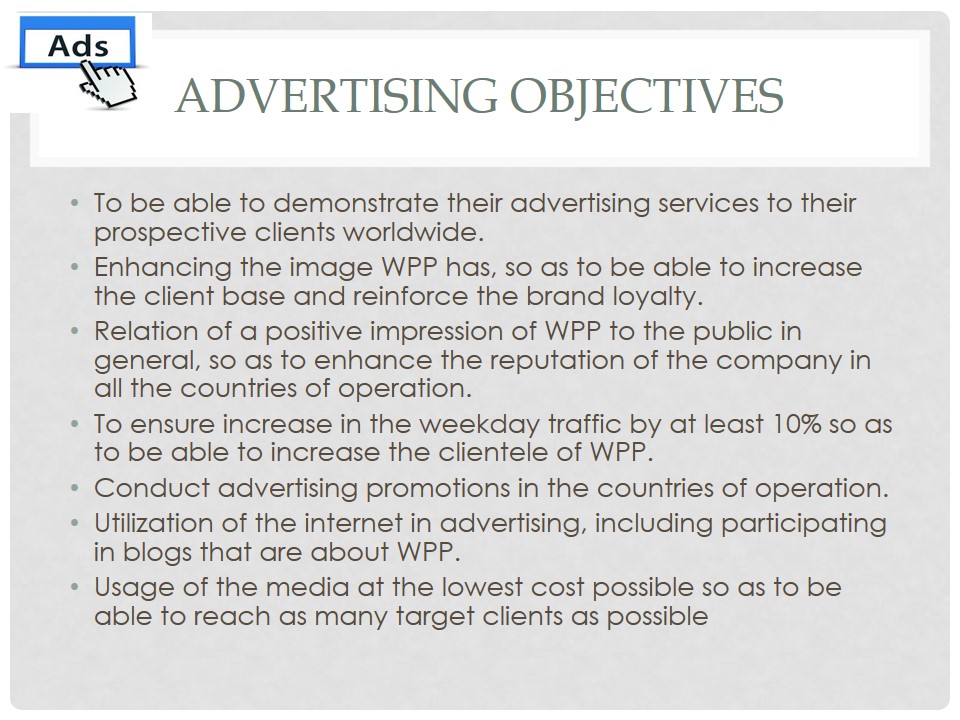
The Results
- Gross margin growth of 5.9%.
- Revenue growth of 5.3%.
WPP has managed to attain a gross margin growth of 5.9% and a revenue growth of 5.3% . There was a double digit growth in faster growing markets and acceleration in the UK, which was slightly offset by a growth that was slower in the second half based on the results obtained from the US. Advertising, media investment management and direct digital &interactive sectors delivered growth that was above average. The group margins went up due to the presence of effective cost control hence there was more investment in the staff of WPP. The cash flow reinvested in acquisitions delivered additional revenue and supported an increase in the dividends offered to the shareholders.
The advertising objectives and marketing objectives were achieved as the number of clients increased substantially. The use of social media enabled WPP to reach more target clients and this increased the revenue figures. The campaigns conducted were successful as the growth in the revenues obtained was evident. The set marketing objectives and advertising objectives were achieved this is attributable to the medium which was used. The use of print media, electronic media and social media ascertained that the set objectives were achieved. In addition the advertising strategies and marketing strategies played a crucial role in ensuring the smooth operation of the company’s activities.
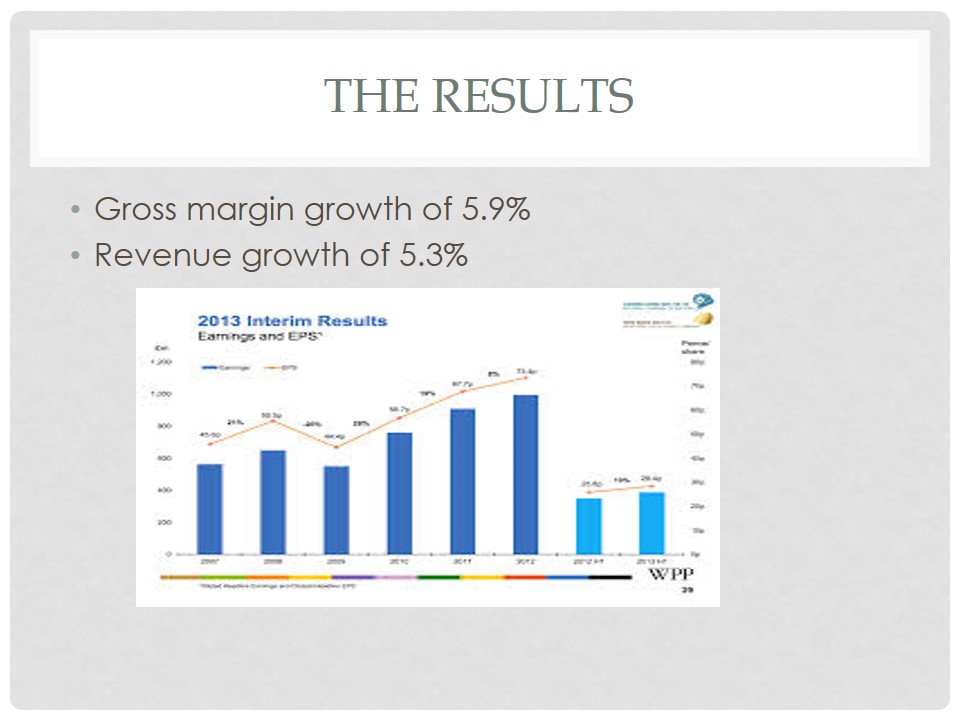
Works Cited
Sorrell, Martin. Sir Martin Sorrell defends top pay. London, UK: British Broadcasting Corporation, 2008. Print.
Stuart, Ewen. Captains of Consciousness: Advertisingand the Social Roots of Consumer Culture. New York: McGraw-Hill, 2006. Print.
WPP 2013. Web.